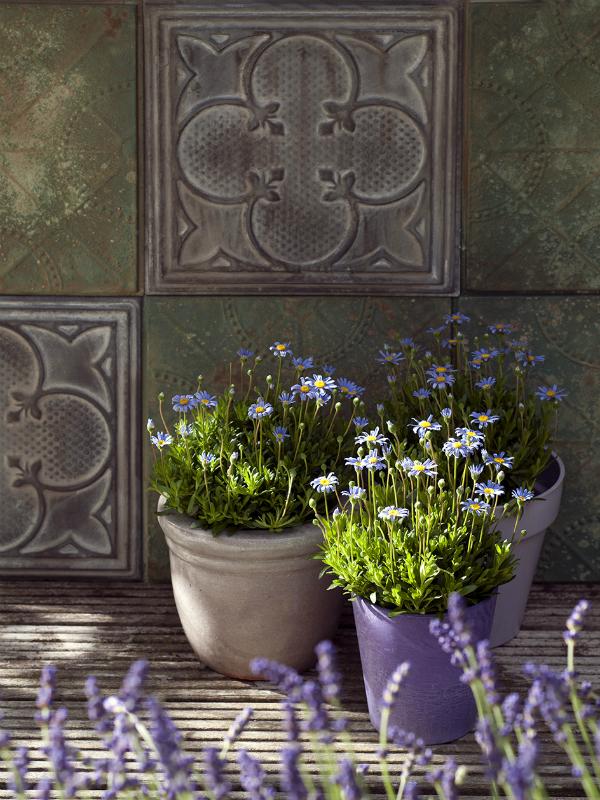Blue marguerite (official name: Felicia amelloides) has fabulously coloured petals which are the shade of a cloudless summer sky. The blue ranges from lilac to almost cobalt. This evergreen non-hardy shrub has narrow green oval leaves out of which long stems grow in the spring which are crowned with flowers which look a bit like daisies. There are also varieties with variegated leaves or white flowers, and cultivated standard varieties. It’s a very natural-looking garden plant that attract extra butterflies with its cheerful yellow heart.
Coast dweller
Blue marguerite is a member of the Aster family, and grows in South Africa in sandy dune regions and rocky slopes on the coast. The shrub can grow to a metre wide and half a metre high there, but the cultivated varieties are a bit smaller and doesn’t go much beyond 40 cm. There are 84 known species, of which 79 grow in the Cape Province. Because blue marguerite can cope with dry and windy conditions, it’s also a popular plant for hanging baskets. The plant’s appearance also makes blue marguerite a great addition to herbaceous borders.
Trivia
-
Because the blue marguerite’s heart contains both male and female parts, the plant symbolises bisexuality.
-
Blue marguerite was first described in 1763 by the botanist Linnaeus, and in 1818 it was named after a German official who admired the flowers. The scientific name Felicia is therefore derived from this Herr Felix.
-
The plant arrived in Europe in the middle of the 18th century, and has been cultivated there ever since.
-
The Latin name means ‘happiness’ and the blue flowers are often associated with the Virgin Mary.





